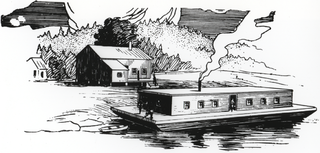Canadian federalism involves the current nature and historical development of the federal system in Canada.
Pith and substance is a legal doctrine in Canadian constitutional interpretation used to determine under which head of power a given piece of legislation falls. The doctrine is primarily used when a law is challenged on the basis that one level of government has encroached upon the exclusive jurisdiction of another level of government.
In Canadian law, a reference question or reference case is a submission by the federal or a provincial government to the courts asking for an advisory opinion on a major legal issue. Typically the question concerns the constitutionality of legislation.
Canadian constitutional law is the area of Canadian law relating to the interpretation and application of the Constitution of Canada by the courts. All laws of Canada, both provincial and federal, must conform to the Constitution and any laws inconsistent with the Constitution have no force or effect.

Reference Re Validity of Section 5(a) of the Dairy Industry Act (1949), also known as the Margarine Reference or as Canadian Federation of Agriculture v Quebec (AG), is a leading ruling of the Supreme Court of Canada, upheld on appeal to the Judicial Committee of the Privy Council, on determining if a law is within the authority of the Parliament of Canada's powers relating to criminal law. In this particular case, the Court found that a regulation made by Parliament was ultra vires. Though the regulation contained sufficient punitive sanctions, the subject matter contained within it was not the kind that served a public purpose.
Section 92(13) of the Constitution Act, 1867, also known as the property and civil rights power, grants the provincial legislatures of Canada the authority to legislate on:
13. Property and Civil Rights in the Province.

Re Board of Commerce Act 1919 and the Combines and Fair Prices Act 1919, commonly known as the Board of Commerce case, is a Canadian constitutional decision of the Judicial Committee of the Privy Council in which the "emergency doctrine" under the federal power of peace, order and good government was first created.

Reference Re Alberta Statutes, also known as the Alberta Press case and the Alberta Press Act Reference, is a landmark reference of the Supreme Court of Canada where several provincial laws, including one restricting the press, were struck down and the existence of an implied bill of rights protecting civil liberties such as a free press was first proposed.

Proprietary Articles Trade Association v Canada (AG), is a Canadian constitutional decision of the Judicial Committee of the Privy Council on the Constitution's criminal law power under section 91(27).

R v Eastern Terminal Elevator Co is an early constitutional decision of the Supreme Court of Canada on the Constitution's Trade and Commerce power.

Caloil Inc v Canada (AG) is a leading constitutional decision of the Supreme Court of Canada on the Trade and Commerce power under section 91(2) of the Constitution Act, 1867. The Court upheld a federal law prohibiting the transport or sale of imported oil in a certain region of Ontario.

Law Society of British Columbia v Mangat, [2001] 3 S.C.R. 113 is a leading Supreme Court of Canada decision where the Court held that a non-lawyer may be given the power to practice law under a federal statute even if it is contrary to provincial legal profession legislation.
Section 91(27) of the Constitution Act, 1867, also known as the criminal law power, grants the Parliament of Canada the authority to legislate on:
27. The Criminal Law, except the Constitution of Courts of Criminal Jurisdiction, but including the Procedure in Criminal Matters.

Reference Re Securities Act is a landmark opinion of the Supreme Court of Canada to a reference question posed on the extent of the ability of the Parliament of Canada to use its trade and commerce power.

Reference Re Assisted Human Reproduction Act is an appeal from the Quebec Court of Appeal to the Supreme Court of Canada on a reference question posed as to the constitutional validity of the Assisted Human Reproduction Act that had been passed by the Parliament of Canada.

Canada (AG) v British Columbia (AG), also known as the Reference as to constitutional validity of certain sections of The Fisheries Act, 1914 and the Fish Canneries Reference, is a significant decision of the Judicial Committee of the Privy Council in determining the boundaries of federal and provincial jurisdiction in Canada. It is also significant, in that it represented a major victory in the fight against discrimination aimed at Japanese Canadians, which was especially prevalent in British Columbia in the early part of the 20th century.

Reference Re Companies' Creditors Arrangement Act is a decision of the Supreme Court of Canada on the constitutionality of the Companies' Creditors Arrangement Act as part of the bankruptcy and insolvency jurisdiction of the Parliament of Canada.

Canada (AG) v Ontario (AG)[1937] UKPC 6, [1937] A.C. 326, also known as the Labour Conventions Reference, is a landmark decision of the Judicial Committee of the Privy Council concerning the distinct nature of federal and provincial jurisdiction in Canadian federalism.

Quebec (AG) v Canada (AG), 2015 SCC 14 is a Canadian constitutional law case concerning the federal government's ability to destroy information related to the Canadian long-gun registry pursuant to the federal criminal law power.

Dobie v Temporalities Board is a Canadian constitutional law case. It was decided in 1881 by the Judicial Committee of the Privy Council, at that time the highest court in the British Empire, including Canada. The case concerned the power of the provinces and the federal Parliament to deal with legal rights created by statutes enacted prior to Confederation in 1867.




